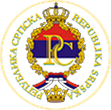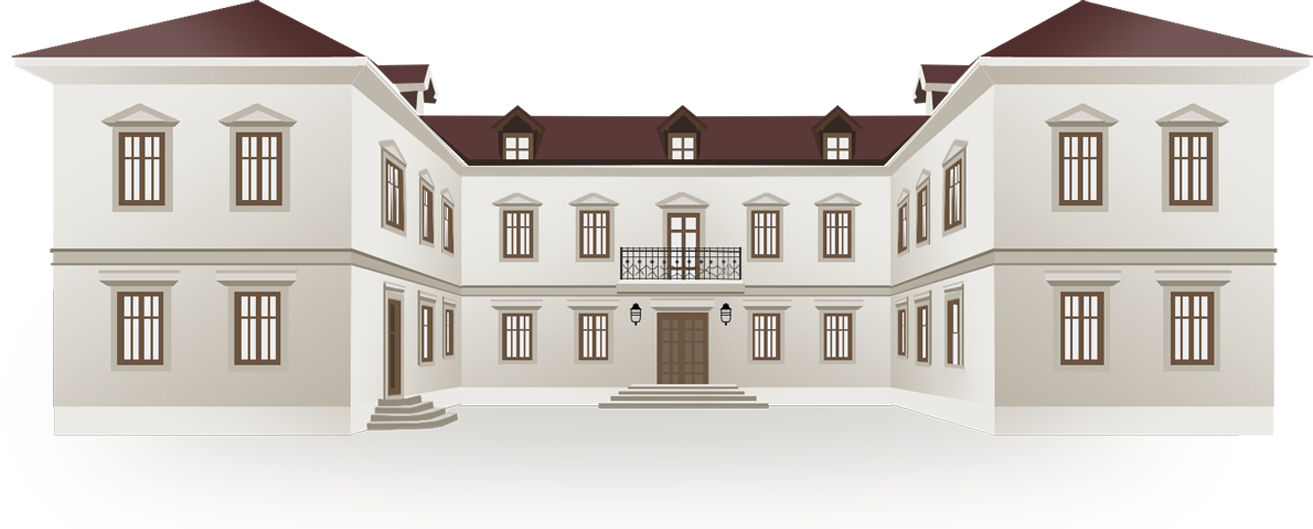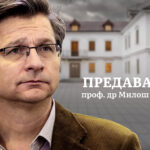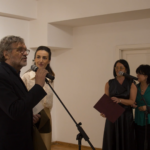Промовисан нови, 21. број Историјских свезака.[:en]The twenty-first issue of “Historical Notebooks” has been promoted
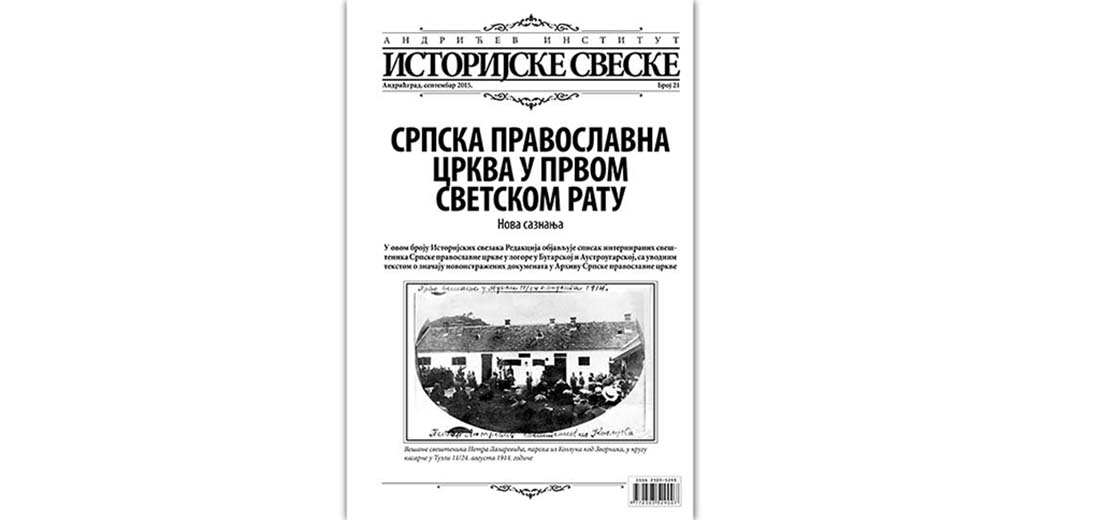
У Андрићевом институту у Андрићграду, данас је промовисан нови, 21. број Историјских свезака.
Септембарски број Историјских свесака у 2015. години отвара текст Српска православна црква у Првом свјетском рату – нова сазнања, аутора ма Радована Пилиповића. Аутор прилога, иначе директор Архива СПЦ у Београду, упознаје нас са настанком ове архивске установе, те документацијом која се у њој чува, а важна је за познавање прилика у Првом свјетском рату, посебно положаја српске цркве и свештенства. Захваљујући напорима запослених у Архиву СПЦ ова грађа ће убудуће представљати важан извор података за све истраживаче који се баве историјом СПЦ и Првог свјетског рата. Пилиповић уједно објављује неколико важних докумената који се тичу српских свештеника интернираних током рата у логорима у Бугарској и Аустроугарској.
Велибор Видић је приредио прилог Ваљевска болница 1914-1915. године. У Ваљеву ће 30. и 31. октобра бити обиљежена стогодишњица Ваљевске болнице, а том приликом ће бити отворена посебна изложба и одржана Међународна научна конференција. Историјске свеске ће у наредном броју објавити наставак Видићевог текста о Ваљевској болници.
Др Миле Бјелајац је аутор текста Прослава или обиљежавање стогодишњице. Аутор пажљиво анализира полемике које су се у скоријем времену водиле у вези узрока и повода за избијање Првог свјетског рата, карактера сарајевског атентата и природе Младе Босне. Бјелајац упозорава на присутне тежње код појединих западних историчара и публициста постоји тежња да се створе „компроимисне верзије“ историје Великог рата и догађаја који су до њега довели, а кривци за ове догађаје потраже на Балакну.
Овај број Историјских свесака закључује шести наставак у којем се објављују историјски извори под називом Српско-аустроугарски односи 1874-1914. у извјештајима српског посланства у Бечу чији је аутор др Мирослав Перишић. Документи су преузети из Архива Србије (МИД, ПО) у Београду.[:en]
At the Andrić Institute in Andrićgrad, today has been promoted the new 21st issue of “Historical Notebooks”.
The September issue of “Historical Notebooks” in 2015 opens the text “Serbian Orthodox Church in the First World War – the new findings”, by Radovan Pilipović. Author of contribution, and also director of the Archives of Serbian Orthodox Church in Belgrade, introduces us to the creation of the archival institution, and documentation it keeps, and is important for knowledge of the situation in the First World War, especially the position of Serbian churches and clergy. Thanks to the efforts of employees in the Archives of Serbian Orthodox Church, these documents will represent an important source of information for all those who deal with the history of the Serbian Orthodox Church and the First World War. Pilipović also published several important documents concerning the Serbian priests were interned during the war in the camps in Bulgaria and Austria-Hungary.
Velibor Vidić prepared a text about hospital in Valjevo from 1914 to 1915. In Valjevo, on 30th and 31st October will be celebrated the centenary of Valjevo hospital, and on this occasion will be opened special exhibition and International conference will be held. In the following issue of “Historical Notebooks” will be published the continuation of Vidić’s text about hospital in Valjevo.
Dr Mile Bjelajac is the author of the “Celebration or Marking the Centenary”. The author carefully analyzes the controversy that took place in recent time lead regarding the cause and reason for the outbreak of the First World War, the character of the Assassination in Sarajevo and nature of Mlada Bosna movement. Bjelajac warns of present tendencies, of some Western historians and publicists, to create „compromise version“ of history of the Great War and the events that led to it, and the responsible ones for these events they seek in the Balkans.
This issue of “Historical Notebooks” concludes with the sixth sequel in which are published historical sources called Serbo-Austro-Hungarian relations 1874-1914. in the reports of Serbian Embassy in Vienna, written by Dr. Miroslav Perišić. Documents were taken from the Archives of Serbia (MID, PO) in Belgrade.
